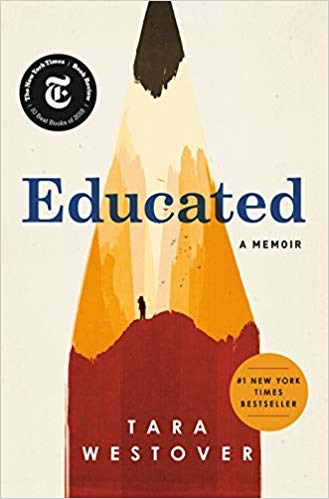Em Short, who is arguably the world’s most thoughtful and prolific critic of electronic fictions, recently wrote an interesting note on “Links and Structures from Michael Joyce to Twine. ” This followed a critique of my own “The Fellow Who Caught Fire,” in which Short took me to task for expecting readers to know my arcane and idiosyncratic terminology. “That’s not my terminology,” I complained, “it was coined in a 1997 paper by Michael Joyce! And if you can’t allude to well-known papers in a pamphlet intended to be read by professors of English, when can you?”
And this is Short’s great strength: she promptly took up Joyce’s 1997 paper “Nonce Upon Some Times”, examined it, and looked at ways its concepts played out in the decades that followed. It’s a good discussion; here, I want to gloss one peripheral detail.
At the outset, Short accurately observes that “Joyce, however, is overtly contemptuous of branching narrative.” “What interests him,” she observes, “is not the question of how one might project oneself into the role of a protagonist; not how one might experience agency, constraint, or non-agency through this pattern of links.” These latter questions are central to the Interactive Fiction (IF) movement with which Short is identified.
Why was Joyce not interested in how one might project oneself into the role of protagonist? It’s easy, but wrong, to assume this is just the contempt of an insider for the gender-fluid, punk-inflected Twine world.
First, Joyce was not attacking IF; IF didn’t exist then, not as a literary movement. The “choose-your-own-adventure” stories he dismisses as “dearily branching fiction” are Edward Packard’s children’s books. Here’s the opening from Tenopia Island, shortly after you’ve crash-landed your spaceship’s lifepod on Tenopia:
By the time you crawl through the hatch, your pod is already surrounded by giant half-human creatures with huge forked hands. They blindfold you and lead you along a winding bumpy surface, then down a long ladder that leads deep underground. At last they remove your blindfold. You are in a huge dimly lit cavern that reeks of sulfurous fumes.
The creatures search you. You hold your breath when they find your computer. But they toss it aside as a useless ornament, and you're able to retrieve it a few moments later.
You quickly learn that your captors are crogocides and that you have been condemned to slavery in their krelium mine. Closely watched by crogocide guards wielding long spiked sticks, you are forced to chip and shovel krelium ore for seven hours before you're allowed to rest for the night.
Which half of these creatures are human? How do we know they are “crogocides?” In what sense are their hands “forked” and ours not? Why does the cavern reek of sulfurous fumes? Why is access by ladder, when even 19th-century coal mines had mechanical access? How do they know to how to blindfold a human? Why would they? This isn’t competent SF.
But let that be. I think that Joyce — an MFA-wielding disciple of the Iowa Writer’s Workshop — was reacting against a different and more substantial opponent, the Victorian sentimental novel. “Sentimental” in this context has a precise, technical meaning: it refers to art that tries to teach us how we ought to feel. This was a great project of the 19th century: think Dickens and Trollope and Victor Hugo: the purpose of the plot was to show you how a good person ought to think about the world.
Modernism saw this use of plot as a chump’s game. Authors contrive events to show that the good end well and the bad end otherwise. Virtuous and compliant women were rewarded with industrious husbands and loving sons; women who strayed or rebelled received tuberculosis and poverty. The world we know isn’t like that. You can’t look at an ugly man and know he is wicked; you can’t glance at a poor woman and know her to be unworthy. It’s easy to lie in the sentimental novel, to set up the fictive world so that wealth and power are synonymous with virtue.
In writing, the reaction against the sentimental novel is called Modernism. People devised different ways to avoid dishonest sentiment. You could try to speak to the unconscious: Brecht and Gertrude Stein and sometimes James Joyce. You could strive to speak directly and truly, about things everyone knows and in language everyone uses: Hammett and Hemingway, Faulkner and Lawrence. You could speak to the concerns of people who don’t generally show up in literature and who have no reason to lie: Huck Finn, Carrie Meeber, Proust’s Narrator, or the speakers in Frost’s early dramatic poems like “Death Of The Hired Hand”. You could avoid plot altogether, or turn plot on its head, or subvert your own plots.
It’s this crusade — the crusade against sentimental dishonesty — in which Joyce has enlisted. His opponent is sentimental, slanted, dishonest propaganda, not IF.
Moreover, “Nonce Upon Some Times” was written in 1997, the turning point in a generation-long interrogation of the relationship between text and meaning. Is the meaning of a story contained in the marks on the page? Reflection gradually showed that readers construct meaning from the intersection of what they know and what the text says. Readers matter, and different readers read differently. This ultimately led people to wonder whether there was any inherent meaning in a text, whether there was anything there that some reader might not turn entirely on its head; this got sorted out eventually, but for a few years it was a near-run thing. Links make this tangible: everyone reads differently, but that difference is easy to hide when we're talking about The New Yorker. When the way you read means you see different words on the screen, it’s harder to argue that the reader is merely a passive recipient of information transfer.
Joyce’s disinterest in branching narrative is not an attack on IF; it's a rejection of Horatio Alger and Carolyn Keane.


